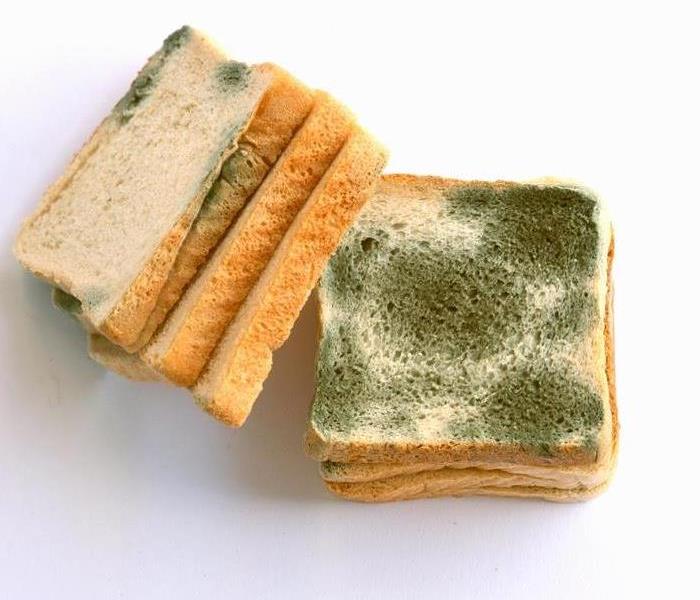Why Does Food Get Moldy?
7/17/2019 (Permalink)
 Mold is attracted to the moisture and nutrients found in food, which is why bread mold and other fungi found on food is so common.
Mold is attracted to the moisture and nutrients found in food, which is why bread mold and other fungi found on food is so common.
If you’ve ever had to change your plans for breakfast because you discovered bread mold on your toast, then you already know that the sight of mold on your food can cause you to quickly lose your appetite. While mold growing on food is both annoying and just plain disgusting, it is completely normal and even natural for mold to grow on food. In fact, mold in nature plays the important role of helping plant material and other dead tissue to decompose and return to the soil. Here is some general information on why mold grows on food and what to do when you find moldy food in your kitchen.
Why Does Mold Grow on Food?
Mold is attracted to moisture, which is why many naturally moist foods like fruit, bread, and cheese are common feeding grounds for fridge mold. Additionally, food contains nutrients that allow mold to thrive. There are several types of mold that are more likely to be found on food than others including:
• Penicillum
• Manoscus
• Monilla
• Cladosporium
• Aspergillus
• Alternaria
• Fusarium
What Should You Do If You Find Mold on Your Food?
If you find fungus growth on any type of food, it is best to throw it away immediately. While bread mold is very common, you will want to check all of your perishable food for mold before consuming it. It’s also very important you dispose of the mold in an outside trashcan and clean anywhere that had contact with the food item to prevent mold from spreading to other parts of your home. If the mold does spread and causes a large problem in your kitchen, you will need the assistance of a mold remediation specialist.
Remember to always dispose of moldy food and clean the affected area to prevent mold from spreading to more food items or other parts of your home. Visit https://www.SERVPROsouthchesterfieldwildwood.com/ for more information on mold.


 24/7 Emergency Service
24/7 Emergency Service